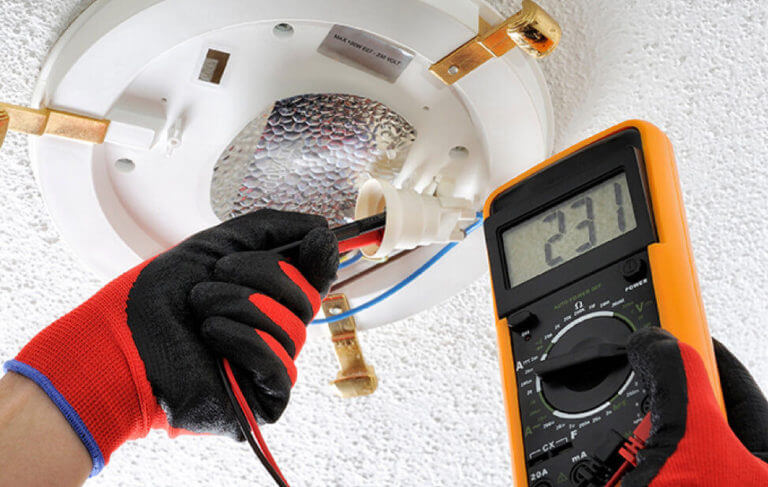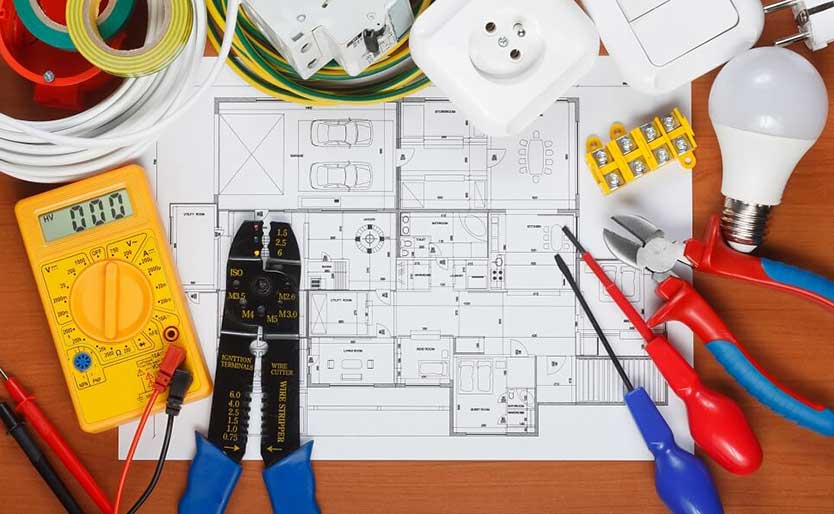Do lights dim when you microwave? Ask a ASP Level 2 Electrician
Typical Electrical Issues Every Homeowner Need To Learn about
House owners frequently experience numerous electrical issues that can influence safety and security and functionality. Problems like flickering lights and stumbled breaker are a lot more common than several recognize. These scenarios can indicate deeper electric issues that warrant focus. Comprehending the threats and indicators connected with obsolete wiring and dead electrical outlets is vital. What procedures can be taken to protect against these problems? Checking out these typical electrical issues can expose crucial understandings for preserving a safe home setting.

Flickering Lights: Causes and Solutions
Why do some homeowners experience flickering lights? Flickering lights can be an usual nuisance, frequently showing underlying electric issues. One key cause is loose or defective connections within lighting fixtures or circuitry, which can lead to periodic power supply. In addition, utilizing high-wattage devices on the same circuit might cause voltage fluctuations, leading to flickering or lowering. An additional possible issue is an overloaded circuit, where as well lots of devices attract power simultaneously, straining the electrical system. Abject or obsolete wiring can add to inconsistent electric circulation. In some instances, flickering lights may signify an issue with the home's electric panel or solution line. Homeowners should address flickering lights without delay to avoid possible dangers. Solutions might include tightening links, redistributing device lots, or getting in touch with an accredited electrical expert for a thorough assessment. Recognizing the source can help guarantee a secure and risk-free electric system in the home.
Tripped Circuit Breakers: What You Required to Know
Have house owners ever before questioned what creates their circuit breakers to trip all of a sudden? This common concern frequently arises from an overload of electric circuits, where as well numerous tools attract power concurrently. In such instances, the circuit breaker works as a safety system, disrupting the circulation of power to avoid getting too hot and potential dangers. Another regular cause is a short circuit, which happens when a real-time cable get in touches with a neutral wire, developing a surge of power that journeys the breaker. Ground mistakes can additionally bring about stumbled breakers; these happen when a real-time cable touches the ground or a grounded surface area, positioning significant security risks. Property owners must regularly assess their usage of high-wattage devices to avoid overloading circuits. Furthermore, recognizing the feature of circuit breakers can help them react suitably throughout a trip, ensuring their home remains properly maintained and risk-free.
Obsolete Circuitry: Dangers and indications
Obsolete wiring can position significant dangers to homeowners, frequently going undetected until problems occur. Houses constructed prior to the 1980s may still have aluminum circuitry or knob-and-tube systems, which are no more taken into consideration secure. Indicators of obsolete wiring include flickering lights, frequently tripped breaker, or melting smells near electrical outlets. These indicators may recommend that the electrical system is overloaded or deteriorating.Additionally, homeowners might discover swelter marks around switches or outlets, which can indicate getting too hot. The threat of electrical fires noticeably raises with obsolete electrical wiring, as these systems were not made to take care of modern-day electrical loads. Home owners are encouraged to have their electrical wiring checked regularly, especially when restoring or including new devices. By recognizing these indications early, they can prevent harmful scenarios and preserve a safer living atmosphere. Updating to current electric standards is a proactive action in keeping home safety and security and efficiency.
Frequently Blown Fuses: Fixing Tips
Regular blown integrates can suggest underlying electric issues that might originate from outdated electrical wiring or overloaded circuits. Property owners experiencing this problem should first determine the devices attached to the influenced circuit. It is suggested to avoid making use of numerous high-wattage gadgets at the same time, as this can bring about circuit overload. If the trouble continues, inspecting the fuse box for indications of wear or damage is crucial; a faulty circuit box may need replacement.Additionally, looking for loosened connections within the circuit can help protect against future events. Homeowners should additionally validate that the merges being made use of are of the correct amperage, as using a wrong fuse can intensify the problem. If these repairing ideas do not deal with the problem, speaking with an accredited electrical contractor is suggested to review the electrical system even more. Addressing these problems quickly can aid reduce dangers and ensure the security of the home's electrical framework.
Dead Electrical Outlets: Typical Reasons and Fixes
When a house owner comes across a dead outlet, it can frequently be a source of frustration and complication. A number of common reasons might bring about this issue. One constant wrongdoer is a stumbled breaker, which can be conveniently reset. Property owners ought to evaluate their electric panel to inspect if any type of breakers are in the off placement. One more opportunity is a malfunctioning outlet itself, which may call for substitute. Additionally, loosened circuitry connections within the electrical outlet can interrupt power circulation, making examination essential.Sometimes, the trouble may originate from an overloaded circuit, specifically when several tools are linked. In such cases, rearranging the electric tons can settle the concern. Home owners need to likewise take into consideration the age of their wiring; older systems may require updates to satisfy modern electric needs. If these steps do not remedy the circumstance, getting in touch with a certified electrical contractor is recommended to ensure security and appropriate diagnosis.
Electrical Shocks: When to Be Worried
Just how can house owners identify whether an electrical shock warrants problem? House owners should initially examine the extent and context of the shock. A light fixed shock, commonly felt when touching steel things, is usual and usually safe. Nonetheless, if the shock takes place while interacting with a plugged-in home appliance or outlet, it may indicate an extra serious issue.The place and frequency of the shocks are vital. Repetitive shocks from the exact same resource, particularly in wet locations like restrooms or kitchens, could signify defective circuitry or inadequate grounding. House owners must likewise think about the experience of the shock; a shock that creates pain or contraction is extra startling than a simple tingle.If there's any kind of unpredictability, it is recommended to speak with a certified electrical next page expert. Neglecting prospective electrical hazards can cause major security risks, including fire or extreme injury.
Overloaded Circuits: Avoidance and Precaution
Overloaded circuits posture considerable dangers in residential setups, typically leading to electrical fires or devices damages (Sydney Level 2 Electrician). more helpful hints Home owners need to identify the indications of an overloaded circuit, such as often tripped breakers or dimming lights. Applying preventive security techniques can help alleviate these hazards and assure a more secure living setting
Acknowledging Overloaded Circuits
What signs suggest that a circuit may be overloaded? Homeowners ought to be cautious for numerous vital signs. Regularly tripped circuit breakers or blown merges recommend extreme lots on the circuit. Lowering or flickering lights, especially when various other home appliances are in use, can represent an insufficient power supply. In addition, outlets or buttons that really feel warm to the touch may indicate getting too hot, a possible fire danger. Unusual buzzing audios from electrical outlets additionally require attention, as they can represent electrical issues. Lastly, if home appliances run inefficiently or stop working to start, it may suggest an overloaded circuit. Identifying these signs early can assist protect against major electrical troubles and advertise a much safer home atmosphere.
Preventive Security Practices
To maintain a risk-free and reliable electric system, homeowners must apply preventive security practices that deal with prospective circuit overloads. One effective procedure is to stay clear of connecting too many gadgets to a single outlet, as this can exceed the circuit's capacity. Making use of power strips with integrated breaker can aid disperse power safely. House owners ought to also on a regular basis inspect cables and devices for damage and replace any damaged tools immediately. It is critical to assure that breaker are working correctly and to be familiar with the complete electrical power being utilized in each circuit. Additionally, speaking with a licensed electrician for routine evaluations can identify possible problems before they rise, guaranteeing a more secure living environment and lengthening the life expectancy of electric systems.
Often Asked Questions
Just how Frequently Should I Have My Electrical System Inspected?
Regular examinations of electric systems are advised every 3 to five years. Property owners should think about much more regular checks if they experience concerns, take on renovations, or stay in older properties to ensure safety and security and conformity.
Can I Deal With Electric Issues Myself or Work With an Expert?

What Are the Signs of an Electrical Fire Danger?
Indicators of an electric fire risk consist of regularly stumbled breaker, flickering lights, shedding smells, tarnished electrical outlets, or cozy, buzzing cables. Homeowners should stay vigilant and seek professional support if any of these indicators exist.
Just how Do I Know if My Home Needs an Electrical Upgrade?
To determine if a home requires an electric upgrade, indicators consist of regular circuit breaker trips, outdated circuitry, inadequate outlets, flickering lights, and link the visibility of older electrical panels, indicating prospective security threats and inefficiency.
Exist Certain Safety And Security Tips for DIY Electrical Job?
When taking into consideration do it yourself electric job, one need to constantly turn off power, utilize insulated devices, verify circuit performance, comply with local codes, and speak with experts for complex jobs to assure safety and stop mishaps. One more potential concern is an overloaded circuit, where too numerous tools attract power concurrently, straining the electrical system. The threat of electric fires substantially boosts with out-of-date electrical wiring, as these systems were not developed to handle modern-day electric tons. Regular blown integrates can show underlying electrical concerns that might stem from obsolete wiring or overloaded circuits. To keep a reliable and risk-free electrical system, house owners have to implement preventative safety practices that resolve potential circuit overloads. ASP Level 2 Electrician. Signs of an electric fire threat include regularly stumbled circuit breakers, flickering lights, burning smells, stained electrical outlets, or warm, humming cables